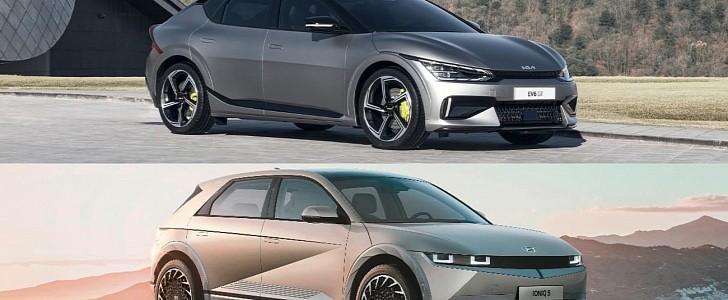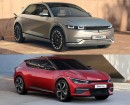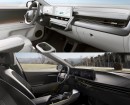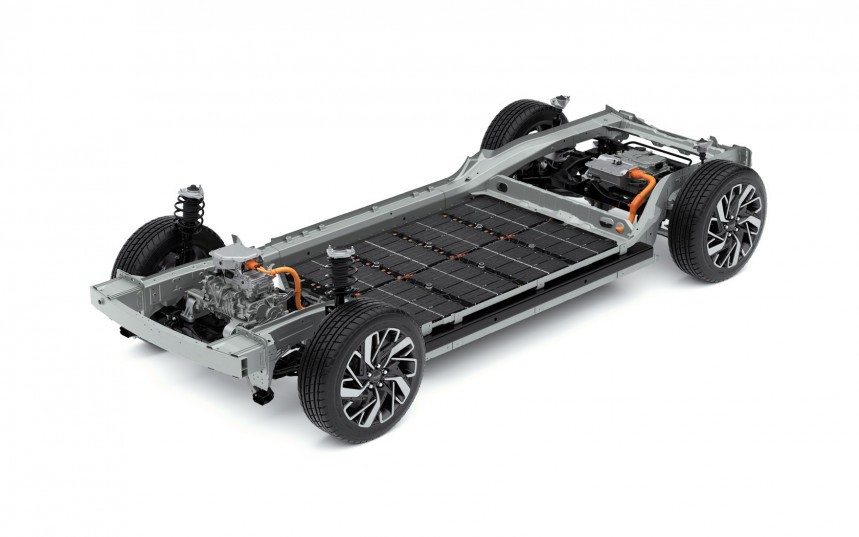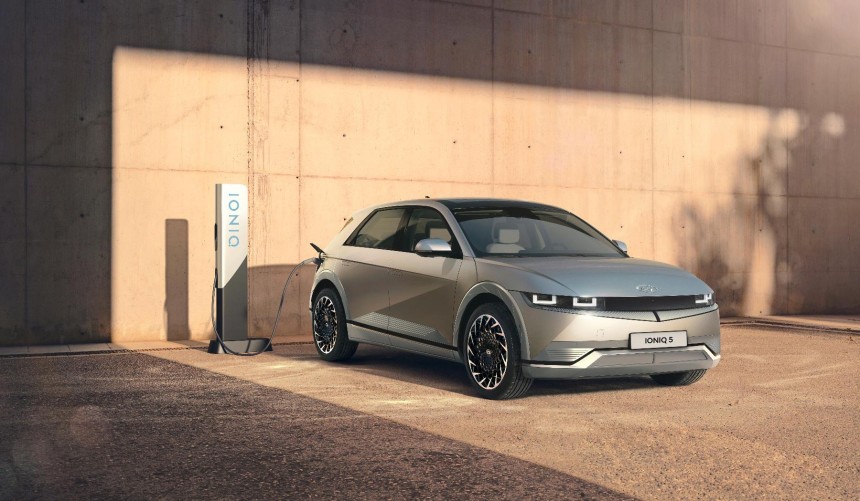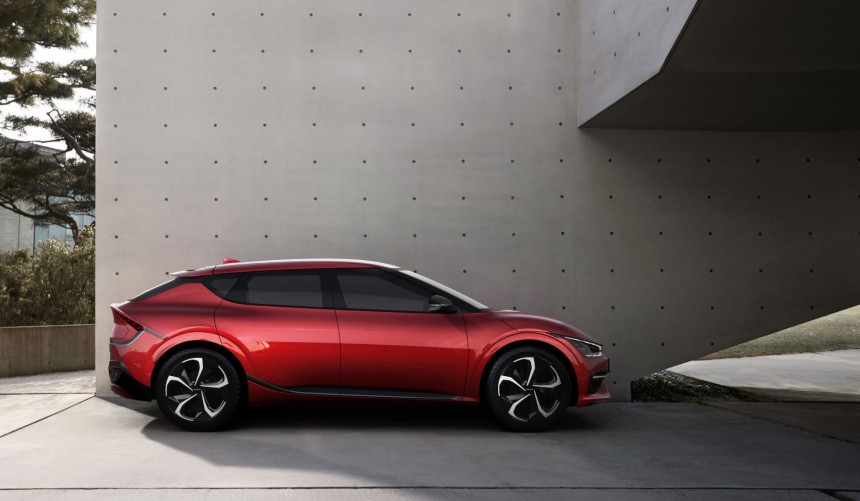If you want to buy a new EV in the near future, the Ioniq 5 and Kia EV6 will probably make your list. If you like both and haven’t decided which one to go for, we’ll help you make the right decision by analyzing what they have in common and what differentiates them from one another.
Both electric compact crossovers are part of the same automotive conglomerate, Hyundai Motor Group, which owns the Hyundai, Kia and Genesis brands.
Although it’s not Hyundai’s first electric vehicle, the retro-futuristic Ioniq 5 is definitely the best-designed and most technologically advanced zero-emission vehicle in the company’s history.
It debuted at Frankfurt Motor Show in September 2019 in concept form, and it’s the first model to be marked under the EV-centric Ioniq sub-brand.
On the other side of the Hyundai Motor Group, the EV6 is the first dedicated electric vehicle to be produced by Kia, after the brand tapped into the market with the Soul EV, a model built on an ICE-based platform.
They also share the same RWD and AWD powertrains which produce 125 kW (168 hp) and 173 kW (232 hp) on standard-range models, while those equipped with long-range batteries have an output of 160 kW (215 hp) and 225 kW (302 hp).
The battery packs are identical on standard range versions and have a 58-kWh capacity. Long-range versions are listed at 77.2-kWh for the Ioniq 5 and 77.4-kWh for the EV6, an insignificant difference considering that the output is the same.
Another common feature is the 800-volt electrical system which provides ultra-fast charging. According to both manufacturers, a long-range 2WD model can be charged from 10 % to 80 % in just 18 minutes using a high-speed charger.
This system allows for standard 400-volt charging without the need for additional adapters, so you can recharge the Ioniq 5 or EV6 using any conventional chargers.
The vehicle-to-load (V2L) function is also shared by both EVs. This function can supply up to 3.6kW of power to charge external devices.
Inside, both models we find a dual-cockpit layout comprised of two 12-inch fully customizable touchscreens and augmented reality head-up displays.
Inside, the Ioniq 5 offers a more minimalistic experience. Its "Living Space" theme emphasizes spaciousness and comfort, offering a unique feature in the shape of the moveable center console that can slide back as much as 5.5 inches (140 mm).
The second-row seats can also slide forward up to 5.3 inches (135 mm) in the Ioniq 5 to maximize passenger legroom or cargo space.
While nothing slides around in the EV6, the interior is spacious, and, like the exterior, the design is more aggressive and sportier, especially in the GT model.
This brings us to the deciding factor if a sportier, more powerful EV is what you’re after. Kia has announced that the EV6 will be available in GT guise, which comes with 4WD, an electronic limited-slip diff, and the long-range 77.4-kWh battery pack. It’s also more powerful than any Ioniq 5 model, offering a combined output of 430 kW (577 hp) out of its two e-motors.
When it comes to cargo space, the Ioniq 5 has a maximum capacity of 531 liters (18.7 cu ft), while the EV6 offers 520 liters (18.3 cu ft). Fold down the rear seats, and that increases to 1,591 liters (56.1 cu ft) in the Hyundai and 1,300 liters (45.9 cu ft) in the Kia.
The frunk is also more spacious on the Ioniq 5. RWD models offer 57 liters (2 cu ft) while those with dual-motor AWD powertrains have a capacity of 24 liters (0.8 cu ft). On the EV6, North American models get 20 liters (0.7 cu ft) on both AWD and RWD versions. 2WD EVs sold in other markets get 52 liters (1.8 cu ft) of space.
To conclude, there’s not much to separate these two EVs in terms of tech. If the performance is a priority, then the EV6 GT is definitely the one you should buy, but if that doesn’t factor in, then you’ll have to base your final decision on which design you like more.
Another important factor is obviously the price, but neither of the manufacturers has released any official details about the pricing yet.
Both the Ioniq 5 and EV6 will be available later this year, while the EV6 GT version is set to be released in 2022.
Although it’s not Hyundai’s first electric vehicle, the retro-futuristic Ioniq 5 is definitely the best-designed and most technologically advanced zero-emission vehicle in the company’s history.
It debuted at Frankfurt Motor Show in September 2019 in concept form, and it’s the first model to be marked under the EV-centric Ioniq sub-brand.
On the other side of the Hyundai Motor Group, the EV6 is the first dedicated electric vehicle to be produced by Kia, after the brand tapped into the market with the Soul EV, a model built on an ICE-based platform.
What They Have in Common
As I mentioned before, both EVs are built on Hyundai’s Electric-Global Modular Platform (E-GMP) specifically designed for upcoming Hyundai, Kia, and Genesis electric vehicles.The battery packs are identical on standard range versions and have a 58-kWh capacity. Long-range versions are listed at 77.2-kWh for the Ioniq 5 and 77.4-kWh for the EV6, an insignificant difference considering that the output is the same.
Another common feature is the 800-volt electrical system which provides ultra-fast charging. According to both manufacturers, a long-range 2WD model can be charged from 10 % to 80 % in just 18 minutes using a high-speed charger.
The vehicle-to-load (V2L) function is also shared by both EVs. This function can supply up to 3.6kW of power to charge external devices.
Inside, both models we find a dual-cockpit layout comprised of two 12-inch fully customizable touchscreens and augmented reality head-up displays.
What’s Different
Although they are identical in terms of technology and performance, the Ioniq 5 and EV6 look totally different. The former was universally praised for the blend of retro and modern cues while the latter is more aggressively stylized but by no means uglier.Inside, the Ioniq 5 offers a more minimalistic experience. Its "Living Space" theme emphasizes spaciousness and comfort, offering a unique feature in the shape of the moveable center console that can slide back as much as 5.5 inches (140 mm).
While nothing slides around in the EV6, the interior is spacious, and, like the exterior, the design is more aggressive and sportier, especially in the GT model.
This brings us to the deciding factor if a sportier, more powerful EV is what you’re after. Kia has announced that the EV6 will be available in GT guise, which comes with 4WD, an electronic limited-slip diff, and the long-range 77.4-kWh battery pack. It’s also more powerful than any Ioniq 5 model, offering a combined output of 430 kW (577 hp) out of its two e-motors.
The frunk is also more spacious on the Ioniq 5. RWD models offer 57 liters (2 cu ft) while those with dual-motor AWD powertrains have a capacity of 24 liters (0.8 cu ft). On the EV6, North American models get 20 liters (0.7 cu ft) on both AWD and RWD versions. 2WD EVs sold in other markets get 52 liters (1.8 cu ft) of space.
To conclude, there’s not much to separate these two EVs in terms of tech. If the performance is a priority, then the EV6 GT is definitely the one you should buy, but if that doesn’t factor in, then you’ll have to base your final decision on which design you like more.
Another important factor is obviously the price, but neither of the manufacturers has released any official details about the pricing yet.
Both the Ioniq 5 and EV6 will be available later this year, while the EV6 GT version is set to be released in 2022.
